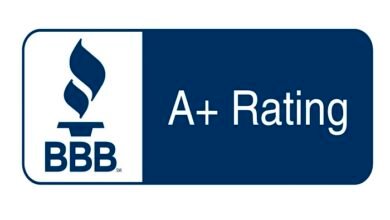Kurla Patti 220: Everything You Need to Know

Introduction
“Kurla Patti 220” is a term that may not be widely recognized outside specific industries, but within certain circles, it is essential. Whether you’re involved in manufacturing, construction, or simply interested in materials, understanding Kurla Patti 220 is crucial. This blog post provides a thorough exploration of Kurla Patti 220, covering its origins, characteristics, applications, and more. By the end of this article, you’ll have a solid grasp of what Kurla Patti 220 is and why it matters.
The Origins of Kurla Patti 220
Kurla Patti 220 has a rich history rooted in the industrial growth of Kurla, a prominent area in Mumbai, India. The term “Kurla Patti 220” refers to a specific type of material or product, often used in manufacturing and construction. The origins of Kurla Patti 220 are deeply intertwined with the development of Mumbai’s industrial sector, where it was first produced and utilized. Over the years, Kurla Patti 220 has become synonymous with quality and reliability, particularly in industries that require durable and resilient materials.
What Exactly is Kurla Patti 220?
Kurla Patti 220 is a specialized material used in various industrial applications. It is typically a type of metal or alloy, known for its strength and durability. The “220” in Kurla Patti 220 likely refers to a specific grade or specification, indicating its suitability for particular uses. Understanding what Kurla Patti 220 is made of and how it is processed is key to appreciating its importance in industrial settings. The material’s composition, manufacturing process, and unique properties make it an indispensable component in many projects.
Manufacturing Process of Kurla Patti 220
The manufacturing process of Kurla Patti 220 is intricate and requires precision. Typically, Kurla Patti 220 is produced in specialized factories that adhere to strict quality standards. The raw materials are carefully selected, melted, and processed to achieve the desired composition and properties. The production of Kurla Patti 220 involves several stages, including casting, rolling, and finishing. Each step is crucial to ensuring that the final product meets the necessary specifications and performs as expected in its intended applications.
Applications of Kurla Patti 220
Kurla Patti 220 is used in a wide range of applications across different industries. Its strength and durability make it ideal for construction projects, particularly in areas that require materials that can withstand heavy loads and harsh conditions. Additionally, Kurla Patti 220 is used in the manufacturing of machinery and equipment, where its resilience ensures long-term performance. In automotive and aerospace industries, Kurla Patti 220 is valued for its ability to maintain integrity under high stress. Understanding these applications helps highlight the versatility and importance of Kurla Patti 220.
Benefits of Using Kurla Patti 220
There are numerous benefits to using Kurla Patti 220 in industrial and construction projects. One of the primary advantages is its durability, which ensures that structures and machinery made with Kurla Patti 220 can withstand significant wear and tear. Additionally, Kurla Patti 220 is resistant to corrosion, making it suitable for use in environments where exposure to moisture and chemicals is a concern. Its strength-to-weight ratio is another benefit, allowing for robust construction without adding unnecessary bulk. These benefits make Kurla Patti 220 a preferred choice in various applications.
How to Choose the Right Kurla Patti 220 for Your Project
Selecting the right Kurla Patti 220 for your project is essential to achieving the desired results. Factors to consider include the specific grade of Kurla Patti 220, the environmental conditions it will be exposed to, and the load-bearing requirements of the project. Consulting with experts or suppliers who specialize in Kurla Patti 220 can provide valuable insights and help ensure that you choose the right material for your needs. Proper selection not only enhances the performance of the material but also extends the lifespan of the project.
Maintenance and Care of Kurla Patti 220
Proper maintenance and care of Kurla Patti 220 are crucial to preserving its properties and ensuring long-term performance. Regular inspections should be conducted to check for signs of wear, corrosion, or damage. In environments where Kurla Patti 220 is exposed to harsh conditions, protective coatings or treatments may be applied to extend its lifespan. Understanding the specific maintenance requirements of Kurla Patti 220 can help prevent costly repairs and replacements, ensuring that the material continues to perform optimally throughout its use.
The Environmental Impact of Kurla Patti 220
As with any industrial material, it’s important to consider the environmental impact of Kurla Patti 220. The production process, while efficient, does have environmental considerations, particularly in terms of energy consumption and emissions. However, efforts are being made within the industry to minimize these impacts through the use of more sustainable practices and materials. Additionally, the durability of Kurla Patti 220 contributes to its environmental benefits, as it reduces the need for frequent replacements and repairs, thereby conserving resources.
Innovations in Kurla Patti 220
The field of materials science is constantly evolving, and Kurla Patti 220 is no exception. Innovations in the production and application of Kurla Patti 220 are continuously being developed, aiming to improve its properties and broaden its uses. These innovations include new alloys, advanced manufacturing techniques, and enhanced performance characteristics. Staying informed about the latest developments in Kurla Patti 220 can help industries adopt more efficient and effective practices, ensuring that they remain competitive and environmentally responsible.
Common Challenges with Kurla Patti 220 and How to Overcome Them
While Kurla Patti 220 is a highly reliable material, it is not without its challenges. Some common issues include difficulty in machining, potential for corrosion in certain environments, and the need for specialized handling. Overcoming these challenges requires a thorough understanding of the material and its properties, as well as the implementation of best practices in manufacturing and maintenance. By addressing these challenges head-on, industries can fully harness the potential of Kurla Patti 220 in their projects.
The Future of Kurla Patti 220 in Industry
The future of Kurla Patti 220 looks promising, with ongoing advancements and increasing demand across various sectors. As industries continue to seek materials that offer a combination of strength, durability, and sustainability, Kurla Patti 220 is likely to remain a key player. The development of new grades and applications will further expand its use, making it an even more integral part of modern industrial practices. By staying ahead of the curve and embracing the latest trends, businesses can ensure that they make the most of what Kurla Patti 220 has to offer.
Conclusion
Kurla Patti 220 is an essential material in many industries, known for its strength, durability, and versatility. Whether you’re involved in construction, manufacturing, or any other field that requires reliable materials, understanding Kurla Patti 220 is crucial. This comprehensive guide has covered everything from its origins and manufacturing process to its applications and future prospects. By leveraging the benefits of Kurla Patti 220 and staying informed about the latest developments, you can ensure that your projects are successful and sustainable.
FAQs
1. What is Kurla Patti 220 used for?
Kurla Patti 220 is used in various industrial applications, including construction, machinery manufacturing, and the automotive and aerospace industries. Its strength and durability make it ideal for projects that require materials capable of withstanding heavy loads and harsh conditions.
2. How is Kurla Patti 220 manufactured?
Kurla Patti 220 is manufactured through a precise process that involves selecting high-quality raw materials, melting, casting, rolling, and finishing. The process is designed to ensure that the material meets specific grade and performance standards.
3. What are the benefits of using Kurla Patti 220?
The benefits of using Kurla Patti 220 include its durability, corrosion resistance, and excellent strength-to-weight ratio. These properties make it a preferred choice for industries that require long-lasting and reliable materials.
4. How can I maintain Kurla Patti 220 in my projects?
Maintaining Kurla Patti 220 involves regular inspections, applying protective coatings if necessary, and following proper handling and care practices. This helps prevent damage and extends the material’s lifespan.
5. What is the future of Kurla Patti 220 in the industry?
The future of Kurla Patti 220 looks bright, with ongoing innovations in materials science and increasing demand across various sectors. New grades and applications are expected to expand its use and enhance its performance in industrial projects.





